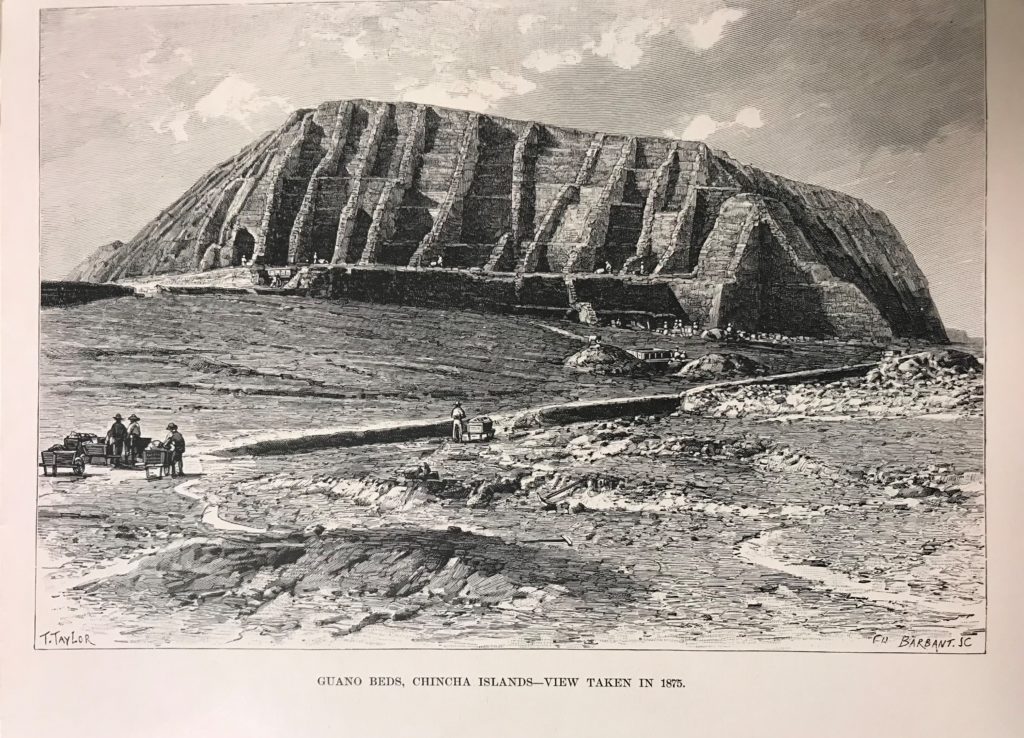
After an hour of processing the Rundel collection, somehow the novelty of maps from the 18th century attenuates. In a way their forms can resemble sheep, lulling me as each one bounds across my field of vision.
That is when a print woke me from the malaise. It was an illustration of a rather impressive stone monument, not unlike the foundation of Egyptian pyramids. Even more remarkable though was the caption beneath: GUANO BEDS, CHINCHA ISLANDS–VIEW TAKEN IN 1875.
Guano? Like bat feces guano?
So I took a moment to research. The Chincha Islands did in fact indicate guano, but from sea birds. It was from guano that saltpeter had been extracted for gun powder and fertilizer. The island was not just a coincidental find nor an attraction, but a highly lucrative mining enterprise.
Also, it was Spain’s seizure over the Chincha Islands in 1865 which led to the Spanish-South American War. As the island produced nearly 60% of Peru’s annual revenue, the occupation was an effective but antagonistic measure interpreted as a Spanish attempt to recapture its former colonies.
Whatever the intent of the Spanish occupation, they left eventually after demanding the Peruvian government apologize for their treatment of Spanish immigrants. Some consider it to their interpretation of reparations.
Even with the colonial powers gone, the guano deposits were nearly exhausted by 1874.
This print, dated 1875, illustrates a massive enterprise with significant infrastructure and people still at the yolk, lugging wheelbarrows of guano here and there.
I’m still unsure about this structure and timing of this depiction. There is a lot to speculate further on these inconsistencies. But that is history for you in its multivalent ways.